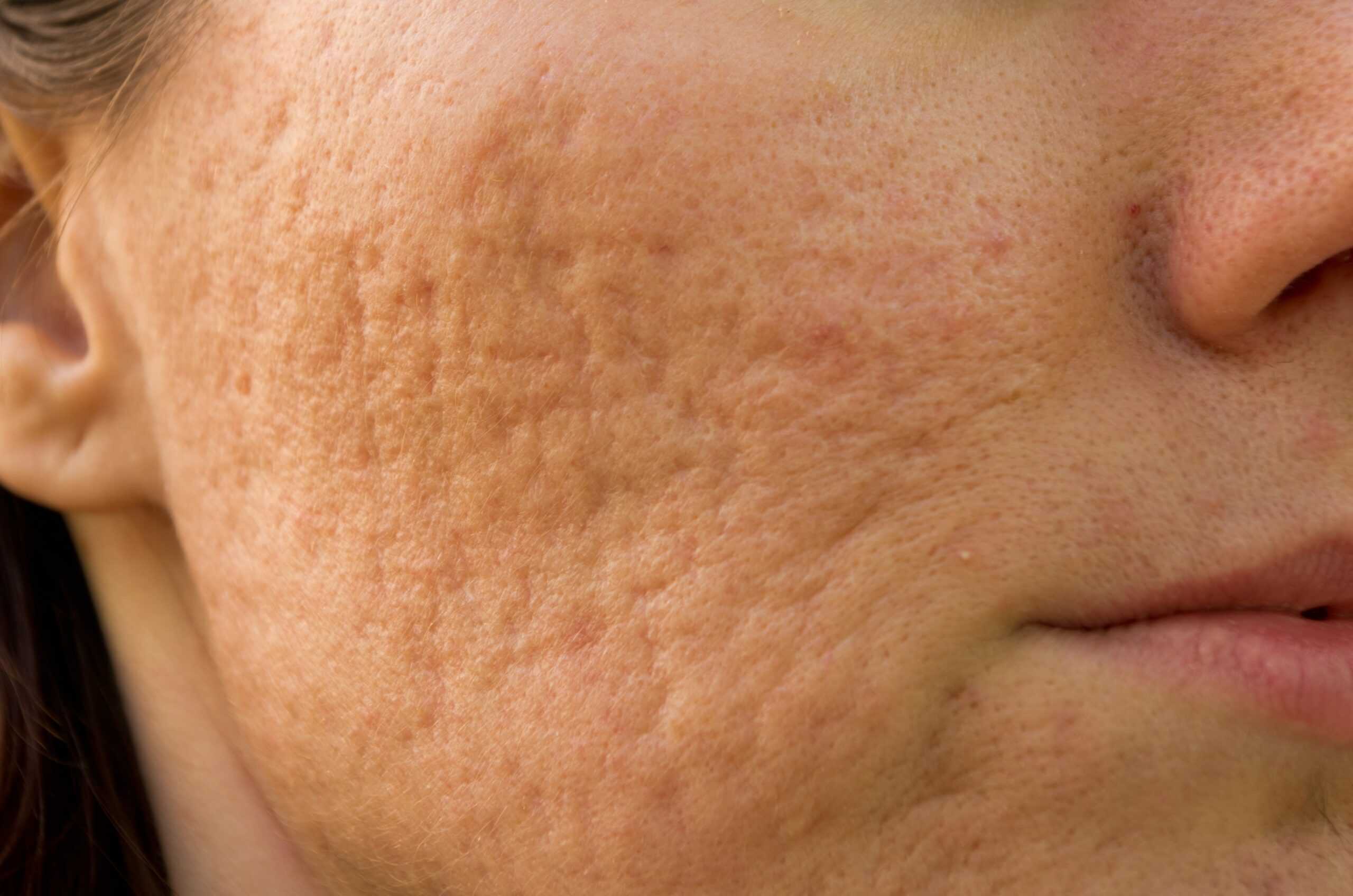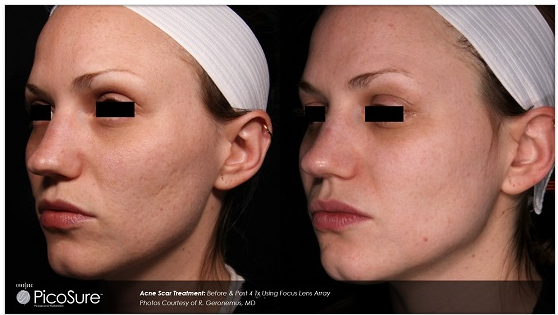An Unbiased View of Acne Scars
An Unbiased View of Acne Scars
Blog Article
The Definitive Guide to Acne Scars
Table of ContentsThe Of Acne ScarsExcitement About Acne ScarsIndicators on Acne Scars You Should KnowNot known Factual Statements About Acne Scars Excitement About Acne Scars
Raised acne scars happen when the body creates as well much collagen and form a visible bump. As we age, acne marks end up being more noticeably since our skin loses collagen.An individual hold-ups therapy for inflammatory acne. The longer you wait to look for treatment for acne, the greater the risk of scarring. A person chooses at, presses or stands out acne. When popping an acne, you press bacteria deeper into pore. If we didn't need another reason that not to stand out a pimple, know that a mark can be the straight outcome of your activities.
Your hereditary makeup plays a large duty in just how much acne, and what sort of acne you might create. As we said previously, there is no magic active ingredient to take acne scars away in the blink of an eye. There are treatments available that assistance lessen the scarring in time.
To perform acne scar surgical treatment, a skin specialist may lift the mark, bringing it closer to the surface area of the skin to make it less noticeable. best for acne scars that are virtually flat. These therapies include laser skin resurfacing, chemical peels and microdermabrasion. Resurfacing removes layers of the skin, which permits the body to produce brand-new skin cells.
Acne Scars - An Overview
best for all sorts of acne marks. Lasers and various other light therapies can treat raised scars safely and successfully. Therapy with a pulsed dye laser (PDL) can aid reduce the impulse and discomfort, reduce shade, and squash an elevated scar. For people with lighter skin, extreme pulsed light (IPL) also might be a treatment choice.
After 3 needling treatments, there was enhancement in the look of acne marks over time contrasted with the control team, with very little pain reported - acne scars. Therapy of acne scarring continues to be a restorative obstacle, with treatment methods that include a range of possible alternatives.
Nonablative and ablative lasers can be used to either get rid of or pierce skin in a fine pinpoint pattern, with resulting neocollagenesis; just a portion of the skin is treated with each therapy, and a series of therapies are required to deal with the entire damaged surface. It has been suggested that neocollagenesis and improvement of acne marks can also be achieved using needle rollers, which utilize a mechanical, macroscopic technique to generate small skin and facial openings.
The Best Strategy To Use For Acne Scars
Like paint rollers, such tools can be returned and forth along the skin. Needling as a feasible treatment for acne scarring was introduced by Camirand and Doucet, who described usage of a tattoo weapon to abrade acne marks. Fernandes,6 consequently insisted that needling with a roller brought about percutaneous collagen induction.
At each of these sees, needling was done on the research therapy location, and topical anesthetic was just massaged right into the control location. Digital pictures and damaging events (eg, infection, prolonged erythema, long term edema, serosanguineous water drainage, bleeding, ulcer, disintegration, and pigmentation), including their duration, resolution, strength, connection to the research procedure, and any medicinal activities taken, were tape-recorded prior to each treatment.

Pain level was recorded based on a 10-point visual analog scale after the treatment. Quickly after each therapy, mild manual pressure with gauze was obtained 5 mins to regulate pinpoint blood loss and product secretion. The skin was soaked with saline swabs for an hour to assist in hydration while the people were educated concerning the demand for home care.
What Does Acne Scars Do?
The tool was then more cleaned up by gas sanitation, saved in a shut plan, and classified with the participant's name and the very first treatment day on package till the next therapy. This sterilization procedure was complied with to make certain a high degree of infection control in this research study setup. The primary end result measure was the quantitative worldwide scarring grading system, developed by Goodman and Baron.
2 blinded dermatologists (S.H. and M.P.) independently rated individuals' acne marks based upon basic electronic photographs obtained at baseline and at the 3-month and 6-month follow-up sees. Required my explanation arrangement was made use of to integrate ratings. Considered that this was an early pilot test, we considered it proper to consider acne scars collectively, not separately, additional resources by various morphologic subtypes (eg, rolling, boxcar, ice pick, and so on).
and M.P.) did not take part in randomization or therapy and for that reason had the ability to be blinded concerning task. Adjustments in mean scar scores from standard to 3 and 6 months, respectively, were computed for the treatment and control arms. Repeated-measures analysis of difference with pairwise comparisons with Sidak change were done to check whether the mark score varied on therapy type, time, or the communication in between both.
The Wilcoxon authorized rank examination was used to examine whether the difference in total acne mark look was linked with therapy type. The research took location from November 30, 2009, through July 27, 2010. Twenty people consented, and 5 quit prior to the very first treatment. The staying 15 finished all therapies and are evaluated.
Acne Scars for Beginners
At 3 months compared to baseline, the decrease in mark rating in the needling group was nonsignificant (mean distinction, 2.4, 95% CI, 0.01 to 4.8; P =.052) (Number 3). The needling procedure was not specifically uncomfortable. The mean discomfort score was 1.08 of 10. Pain rankings raised somewhat in time (P =.01), with week 4 pain ratings (mean, 1.75; 95% CI, 0.90-2.60) dramatically higher than week 2 (mean, 0.78; 95% CI, 0.40-1.20) and week 0 (mean, 0.71; 95% CI, 0.40-1.00).
When asked to approximate the discomfort experienced during and in the days after their treatment, participants typically reported no discomfort (acne scars). Most individuals were very completely satisfied with their procedure, replied yes when asked if they would certainly do this treatment again to treat additional scars, and claimed they would certainly recommend needling to their good friends
Mild short-term erythema and edema, which were not identified as unfavorable occasions and hence not officially tracked, were regularly observed by the detective (M.A.) and reported by individuals after therapies. This research discloses some improvement in acne scars after a series of 3 therapies of needling. There is a statistically significant renovation in such scars in the therapy team from baseline to 6 months and no significant useful link renovation during this duration in the control team.

Report this page